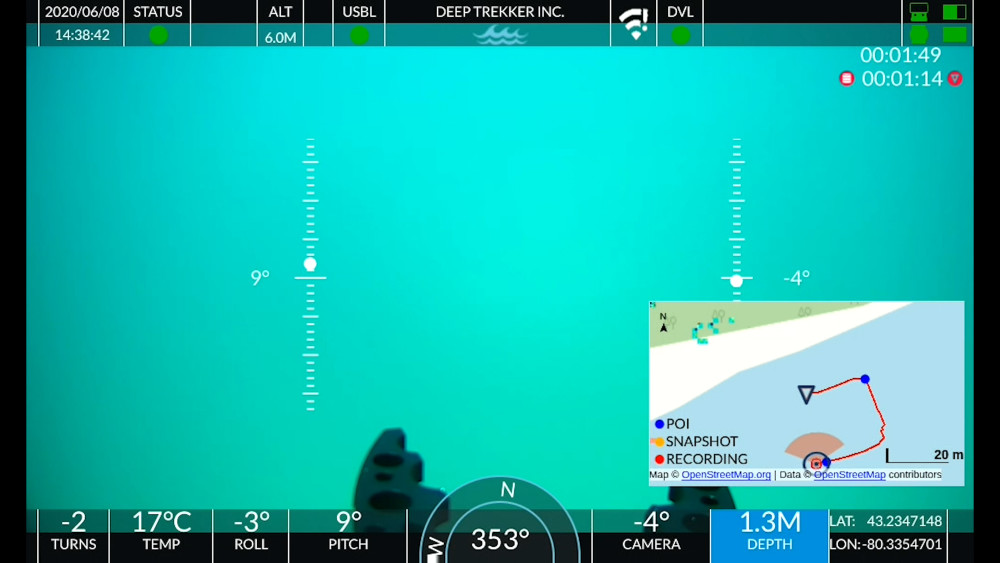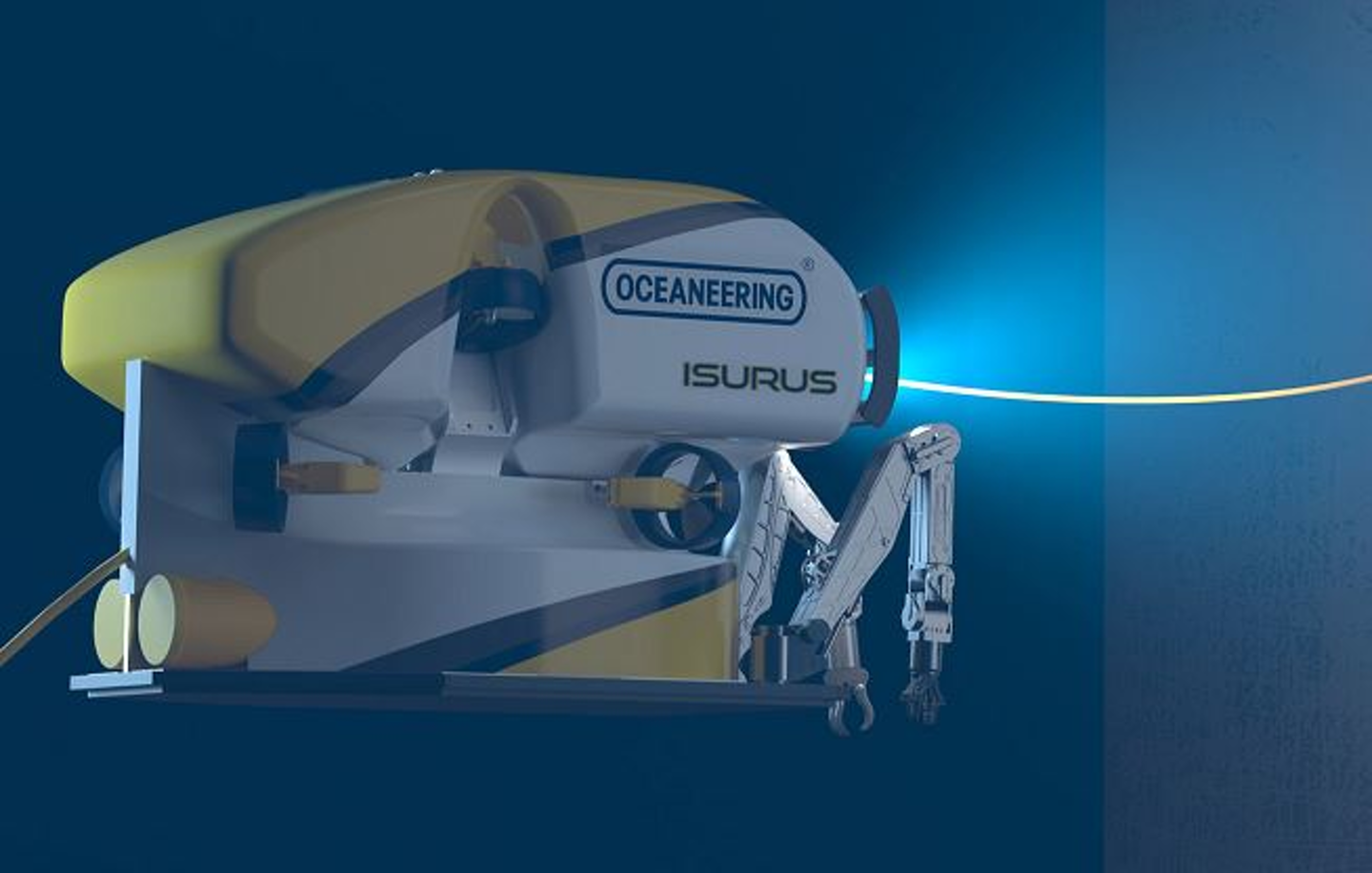Home › Forums › ROV › ROV Technical Discussions › Video system and matrix
- This topic has 21 replies, 9 voices, and was last updated 13 years, 5 months ago by
luckyjim37.
-
AuthorPosts
-
February 9, 2011 at 3:23 pm #4069
Trond Ruud
ParticipantHello guys,
I have been given the task to provide a existing ROV with cameras and a solution for video feed to the control container.
At this point, there are no cameras. What we have is basically a single strand single mode fibre running from the ROV at 2,5kkm depth and up to a container.
I was hoping that someone in this forum could guide me on the right path to create a system that records, saves and presents the video to a user topside.
There are some requirements for the system. There can’t be much delay(100ms is on the limit). The video can be routed to any of the monitors topside.
Components in the system:
Cameras
Encoders
Video server(Storage)
Video client(
Matrix solutionMy thought:
Run all cameras through H264 encoder and onto the network.
Decode the information in a video server with software(maybe milestone? any experience?). Use a DVI matrix to be able to route all inputs to all outputs.Any thoughts or suggestions?
February 9, 2011 at 4:26 pm #30312Rons_ROV_Links
ParticipantUse a DVI matrix to be able to route all inputs to all outputs.
Any thoughts or suggestions?
I normally prefer to route the signals onboard as "SVGA over CAT5" and use a CAT5-matrix-switcher.
February 9, 2011 at 7:57 pm #30313Trond Ruud
ParticipantCould you give some more details about this solution?
What kind of software is used to record the video? Is the video routed directly to the screens? And how would this play with other video sources like DVD, PC, etc?
If I understand correctly, the signals from the cameras are extended with a SVGA over CAT5 extender, then there is a matrix that routes these signals to each monitor? Would this solution be possible to run through a fibre?
February 9, 2011 at 8:24 pm #30314rovnumpty
ParticipantTruud
You don’t mention what type of ROV, workclass or eyeball?
I’d look at the various types of fibre mux available from Prizm and Focal. These multiplex the video signals and data at the source, then split them again on the surface. Most of them are built up in module format, allowing you to spec exactly what data you require and how many video.
This is very much an industry standard. They may be a bit more expensive than your are looking to spend, but they are very reliable and allow for easy expansion of the system.
February 9, 2011 at 9:14 pm #30315Trond Ruud
ParticipantIt is a work class ROV.
Are there any drawbacks if we go for ethernet-cameras and separate encoders? This way we could go for a pure ethernet MUX and always being able to use another switch if we need more inputs.
I will look into the MUX solutions from focal and check who has produced the umbilical and fibre, maybe they have some good solutions.
February 10, 2011 at 8:46 am #30316Martin Wareham
ParticipantVideo over ethernet produces delays/latency in my experience, OK for recording but not so good for flying the ROV.
Focal and Prizm muxes are the industry standard but there are cheaper, larger alternatives out there. Also Innova have thrown their hat in the ring with regards to ROV multiplexers too.
My tuppence worth 🙂
February 10, 2011 at 9:38 am #30317Trond Ruud
ParticipantVideo over ethernet produces delays/latency in my experience, OK for recording but not so good for flying the ROV.
Focal and Prizm muxes are the industry standard but there are cheaper, larger alternatives out there. Also Innova have thrown their hat in the ring with regards to ROV multiplexers too.
My tuppence worth 🙂
Your tuppence is worth a great deal for me. 😀
From bottom to top, what kind of solution would you suggest?
If the cameras are not transmitting over ethernet, would you use a fibre MUX with dedicated video-ports? Transmitting a analog signal?
How would you do the recording and presenting?
Latency is a big big problem. The response time needs to be as quick as possible.
February 10, 2011 at 10:25 am #30318Rons_ROV_Links
ParticipantVideo over ethernet produces delays/latency in my experience, OK for recording but not so good for flying the ROV.
With video over ethernet I did not meant to sent the videostream from the ROV to the surface, but for surface routing onboard to the multiple offices and screens.
Normally the camera output signal is composite video (NTSC or PAL) which goes from ROV to surface by using a mux. On the topside you will have this composite video signal again. From here you can split and convert the signal to your needs.
For recording you can feed this composite video signal in a DVD recorder or other recording media.
Using matrix switchers give you the possibilty to switch between different inputs and outputs.
February 10, 2011 at 12:12 pm #30319Martin Wareham
Participanthttp://www.moog.com/products/multiplexers-media-converters-/focal-multiplexer-product-line/
http://www.moog.com/products/multiplexers-media-converters-/prizm-multiplexer-product-line/
http://91.189.182.26/publishwebsite/innova.no/LINK—Fibre-Optic-Product-Family/pmenu-3677
You pay your money, you takes your choice, Focal and Prizm have been around for a long time, Innova not so long but I’m sure either of these solutions would provide fast good quality video. Not cheap but like I said you may find similar solutions out there for other industries that are cheaper? Anything made specifically for the ROV industry normally costs top dollar, but you do get good quality normally.
Rons recording and distribution options sound pretty good.
Hope this helps.
Martin
February 10, 2011 at 1:04 pm #30320slayer
ParticipantYou havent mentioned any cost conserns so if you can, go for the proven way:
Depending on if you have an pressure vessel or not, I would recommend the Focal 907 or Prizm Minimux cards for pressure vessel applications or the Prizm Micromux for oil filled applications.
Had a chance to study Innova’s LINK system last year, looking good as well and perhaps better quality than the Prizm line.
Topside you could use any video distibution devices or route coax directly to an monitor. Prefer Kramer products that has proved itself very good.
I would not recommend any Ethernet conversion if latency is an issue.
Video recording to an HDD can be done with an PC and software depending on if you need overlay and your quality reqirements, or buy Options Videologger/overlay system, Visualsoft DVR or maybe NetMC system (no experience with the last one).
These suggestions are based on industry standards and experience.
The fibre you got, is that for camera use only or do the ROV data runs on that as well?
February 10, 2011 at 4:19 pm #30321Trond Ruud
ParticipantAll data will run on the fiber. There will be a QoS-system to make sure that ROV-control and Sonar har priority over video and less important stuff.
My problem is that I started to like the thought about sending video over ethernet, using encoders and decoders with low latency. I understand that you have experience with latency in those type of situations. But what kind of latency are we talking about?
You will get latency from several components in the delivery of the video.
Camera
Encoder
Switch – sender
Switch – reciever
DecoderWe have found some good encoders and decoders that will give us under 70ms delay each. Is that too much if you want to drive a ROV?
EDIT: Latency from Switches will be very low(1-3ms?)
EDIT2: There is also a cost concern related to the fibre switch, which is why we are looking into using ethernet switches.
The switch will be in a air-filled water-tight compartment.February 10, 2011 at 5:54 pm #30322luckyjim37
ParticipantI think you are trying to re-invent the wheel here using ethernet. We use a 907 mux with 8 video channels. On the topside we have a 16 way Kramer. The video is then distributed on CO-AX. Standard definition video is recorded to HDD and then wrote to DVD. There are three of these units which are doubled up to make a master and copy. They are not specialist or anything as some companies use. I picked them up from the local electrical shop.
The HD video is recorded to either a KI Pro unit in Pro-ress 422 format for editing on an apple mac using final cut pro. Or onto tape on a SONY 1500A recorder.
This is a standard system. The only difference is we have a High Def camera linked in with a CWDM and broke out again on the surface.
We have no visible issues with any time delays and we even take stills pictures down the same fibre with one of the camera channels.I have an ethernet connection within the ROV for Multi-beam but this is stand alone and still comes up the umbilical as fibre through a switch in the pod.
I could get you the specs for that when I am back in the office but it is not a small unit and you would have to convert the signal to ethernet from the camera output format.
February 10, 2011 at 8:37 pm #30323Trond Ruud
ParticipantI know it may be a little strange solution, but it would provide us with a lot more flexibility. If it can’t be done, we have to go with another type of MUX, maybe we just have to suck it up and go for it.
What are the prices on these MUX-cards from Focal? For example a 907 with 8 video channels?
February 10, 2011 at 9:41 pm #30324luckyjim37
ParticipantSorry I had a rush of blood it is a 903 we have not a 907.
Below is the link to the specs.
February 11, 2011 at 12:08 pm #30325Glevum
ParticipantIf you plan to use a Reson 7125 on your ROV then note that it will not work through a gigabit ethernet switch. It needs an unmanaged gigabit ethernet media converter.
The transport layer is ethernet, but the protocol is not.
-
AuthorPosts
- You must be logged in to reply to this topic.



